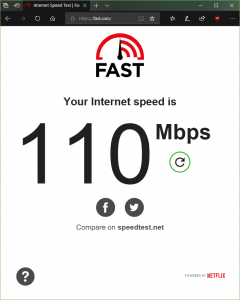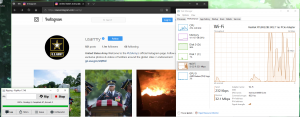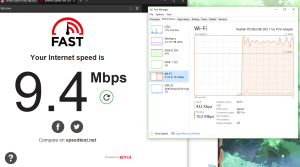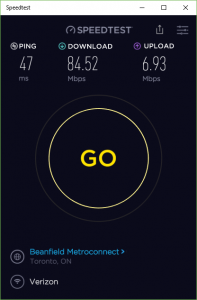Last summer, when Verizon announced mobile data throttling on the Unlimited plan, I wrote this post exploring what Verizon is slowing down on the network under the Unlimited data plan. The post was not the most in-depth, but it demonstrated that Verizon had chosen to throttle specific services such as YouTube, Netflix, and Amazon Prime Video, while leaving other services such as Twitch or Yahoo Video, untouched. Since then, the program has expanded across to multiple tiers of throttling (in addition to multiple tiers of data consumption plans).
- Verizon Go Unlimited – 480p (1.5Mbps) for all devices.
- Verizon GoBeyond Unlimited – 720p (4Mbps) for Mobile devices
- Verizon GoBeyond Unlimited – 1080p (10Mbps) for Tablets or Hotspots
- Verizon GoBeyond Unlimited + $10/line add-on – Unthrottled Streaming.
- Tiered Data plans (Such as the 6GB Verizon plan) are treated similar to “GoBeyond Unlimited” in bandwidth performance.
- Uploads to a throttled service, like YouTube, are also slowed.
One thing I did not notice at the time of writing the previous post was the performance of various social media services like Facebook and Instagram. At the time, they were working un-impeded. Around January while traveling in Virginia, I observed that Verizon may also be reducing the performance of social media services such as Facebook and Instagram (which also host video). I only noticed due to Facebook streams struggling to stream, and Instagram images loading up as if I had a 768kbps DSL connection. But my LTE performance was otherwise excellent.
Before going further into this subject, it’s worth disclaiming:
- I do not use Instagram (do not have an account).
- Instagram is owned by Facebook
- I generally use Facebook only for Messenger. I do not religiously watch videos on it, and occasionally look at a shared photo or two.
- Using my testing method is against the terms of service for Instagram, and the tool selected only downloads public post data. Respect the privacy of others.
To prove whether Verizon is throttling down social media services, I first established a baseline using my Cable Internet connection. This is an unthrottled, uncapped (!!!) service – the way it should be. To gauge Instagram performance, since Instagram is effectively a “view only” service, I used a small Java applet available on GitHub called RipMe. This program allows for the downloading of content in bulk from Instagram, in parallel, effectively allowing me to speed test the service.
Starting off, I gather a public Instagram account (US Army’s Instagram, given today is Veteran’s Day), and Netflix’s fast.com service to gauge what my expected performance should be. I then use the RipMe tool to download the contents of US Army’s Instagram, and view the performance of the download using the Windows Task Manager. I also use the Ookla Speed Test app to speed test my connection (since ISPs naturally don’t want to throttle this).



From face value, I can see that the Cable connection performs as expected. When the RipMe tool reaches a large batch of videos, the bandwidth from Instagram spikes to the connection’s limit, and the content downloads unimpeded. The downloads occur fast enough to where the tool (which processes profiles in chunks) completes transfers before the next batch of content is ready to go.
Moving over to the Verizon Wireless connection (a MiFi Hotspot), the same tests are performed.



The results here seem pretty to draw an obvious conclusion. As a result of Verizon’s attempts to throttle video according to their billing arrangements, they have also degraded the performance of social media websites. There is a likely reason for this, and this is due to encryption. Due to many video services like YouTube, Netflix, and Facebook Video using HTTPS to deliver video content today, Verizon cannot analyze the contents of what you’re loading to determine whether it is a video or an image. As such, Verizon has to resort to a “Best guess” method of reducing bandwidth, by determining traffic flows based on DNS requests, requests sent to specific IP addresses on the Internet, and based on what these services report to Verizon (assuming this occurs). Because Facebook and Instagram are serviced out of the same CDN effectively (observe the error logs in the RipMe tool – notice cdninstagram.com and *.fbcdn.net? Both are sources for Instagram content), and both video and image content come from the same locations, Verizon has to whack it all.
Granted, 10Mbps is not a big deal for services like Instagram or Facebook, where images are generally compressed or are regarded as “low quality” by design (looking at you, Instagram filters). Where this hurts are for those who are on the base unlimited data plan on mobile – the “Go Unlimited” package. With a speed limit of 1.5Mbps, images or videos will be noticeably slowed especially to those who wish to “fast swipe” through an image, or have a high PPI / Resolution screen (This causes Facebook and Instagram to serve up a higher quality photo). And in general, browsing social media will likely be noticeably slower as a result.
With the debate around Net Neutrality in full swing, seeing this type of behavior reminds me of the header image I selected for this post; a graphic which I first saw almost a decade ago, and seemed quite unrealistic at the time. Yet, here we are now, with the Internet being “tiered off” in terms of being fast and slow based on service, and overall consumption (data caps). Excited and feeling good about these changes yet?



